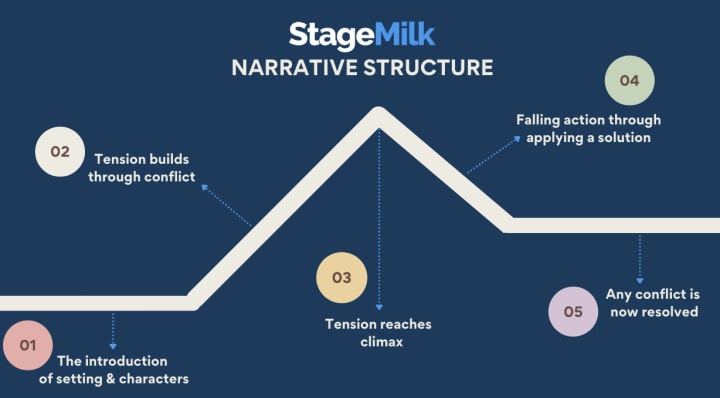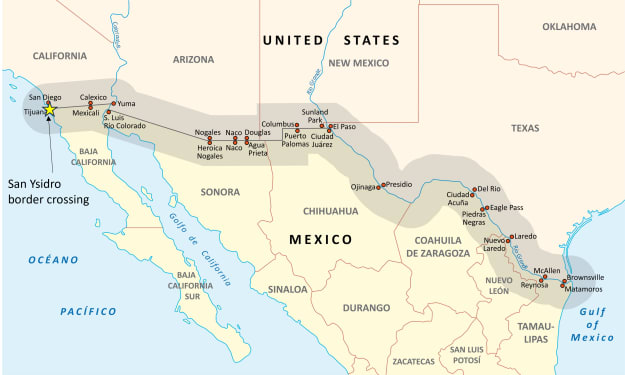Knowing Your Narratives
"All drama is conflict." - Aristotle.

Hello my loves. I hope you are well and doing your best as always! I enjoy writing articles about the craft of writing like Finding Your Writers Voice, or Why Descriptive Writing is Key. This time round, I wanted to give you all a quick run-down on narrative structure.
There are many ways a story can be told, and once again you as a writer have lots of options, so is important to know what those options actually are. Grab a hot drink and some snacks and let's get writing!
“Learn the rules like a pro, so you can break them like an artist." - Pablo Picasso.
I want to start with the seven basic plots of storytelling. When I was first told that there are only seven stories in the world, it blew my mind. The difference is how we convey them, whether narration, form, even tenses.

PART ONE
- Overcoming the Monster: The protagonist sets out to defeat an antagonistic force (often evil) that threatens the protagonist and/or protagonist's homeland.
Examples: Beowülf, War of the Worlds and Harry Potter.
- Rags to Riches: The poor protagonist gains power, wealth, and/or a mate, loses it all and gains it back, growing as a person.
Examples: Jane Eyre, Great Expectations, and David Copperfield.
- The Quest: The protagonist and companions set out to gain an important object or to get to a location. They face temptations and other obstacles along the way.
Examples: Raiders of the Lost Ark, The Iliad and Lord of the Rings.

- Voyage and Return: The protagonist goes to a strange land and, after overcoming the threats it poses or learning important lessons unique to that location, returns with experience.
Examples: The Lion, the Witch and the Wardrobe, The Hobbit and Alice in Wonderland.
- Comedy: Light and humorous character with a happy or cheerful ending; a dramatic work in which the central motif is the triumph over adverse circumstance, resulting in a successful or happy conclusion.
"Comedy is more than humor. It refers to a pattern where the conflict becomes more and more confusing, but is at last made plain in a single clarifying event." - Booker.
Examples: Midsummers Night Dream, Bridget Jones' Diary and the Taming of the Shew.
- Tragedy: The protagonist is a hero with a major character flaw or great mistake, which is ultimately their undoing. Their unfortunate end evokes pity at their folly and the fall of a good character.
Examples: Othello, The Picture of Dorian Gray, and Hamlet.
- Rebirth:An event forces the main character to change their ways and often become a better individual.
Examples: Beauty and the Beast, Pride and Prejudice and A Christmas Carol.

PART TWO
Next, I want to address linear and non-linear storytelling. Narratives in film and TV have, over the years, become complex. Sometimes it works, other times it flops. For that reason, it is important to know your narrative structures and which one would work best for your story. Don't just do it because everyone else is.
Linear by formal definition is a chronological version of events. This is the typical beginning, middle, and end narrative. Also referred to as Freytag's Pyramid: a five part dramatic structure that goes from the introduction into the rise, to the climax, falling action, and finally the resolution.

It is important to know that there are no flash-backs or flash-forwards in linear storytelling, and therefore writing devices like foreshadowing or pathetic fallacy are more often found in linear narrative structures rather than non-linear. Although you can use such devices in both. Remember, it's your story. You do what you want.
Which leads us to Non-Linear Narrative Structure storytelling. A technique in which the chronological order of events is disrupted, meaning the story doesn't progress in a straight line from beginning to end. This is where we see flashbacks and flash forwards.
Another typical trait of non-linear narratives is a parallel story running alongside the main narrative. This is for character building or back story, inevitably creating tension and thus enabling conflict. A great example of this is Peter Shaffer's Equus. Another is Vince Gilligan's Breaking Bad and Better Call Saul.
Gilligan also uses Interactive Narrative Structure, which is a combination of both linear and non-linear story-telling.

Okay, you can take a breath now -
So yes, there's a lot that goes into the narrative and the art of storytelling. Sometimes the most simple stories are the most complex, and sometimes the most complex can be quite simple. Write what works for you and don't be scared to experiment with each draft. One thing you always must keep in mind is your readership. You want to keep them hooked, not confused.
Don't forget to read examples of a similar narrative structure, again this can be in any form, book examples:
- The Lighthouse by Virginia Woolf is a non-linear structure novella, while The Trail by Franz Kafka is linear.
Being a writer involves exploring beyond our comforts. So I encourage you to experiment with your narratives and have fun while doing it!
Ill save Multi-Strand Narratives for another day.
References:
https://artuk.org/discover/artworks/hamlet-act-v-scene-2-hamlet-and-horatio-54922
https://www.nownovel.com/blog/narrative-examples-strong-narration/
https://artofnarrative.com/2019/07/07/exploring-nonlinear-narratives/?utm_content=cmp-true
https://www.stagemilk.com/what-is-narrative-structure/
https://en.wikipedia.org/wiki/The_Seven_Basic_Plots
____________________________________________
Thank you for reading my work, it means a lot to me. Don't forget to leave some love and subscribe, and as always;
Stay safe, stay hopeful and stay blessed! :)
About the Creator
Rosie J. Sargent
Hello, my lovelies! Welcome, I write everything from the very strange to the wonderful; daring and most certainly different. I am an avid coffee drinker and truth advocate.
Follow me on Twitter/X @rosiejsargent97






Comments (1)
I have seen that book, but I never read it. Thank you for this break down... ;)